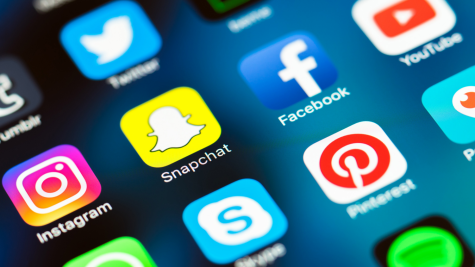Social Media: Friend or Foe? Pennridge Staff Provides Insider Perspective
More stories from Makenzy Portney
Twitter. Snapchat. Instagram. These, among other social media platforms, are the epicenters of teens and young adults. Is this a good thing? Although social networks have a wide range of benefits, their disadvantages are more severe, thus outweighing the good.
Our parents were raised on corded telephones, riding their bikes to friends’ houses, and socializing at the roller rink. Today, phone calls are for emergencies, Uber is convenient when in need for a ride, and phones know us better than anyone. We cannot concretely identify which generation is/was doing things rights, but we can look at the facts we have today. Studies from Kent State University and San Diego State University both independently, in recent years, show that students who spend more time on their smartphones and other technological devices tend to be less satisfied with their lives. Statistically, teens who spend more than five hours a day on the internet are 71 percent more likely to have at least one suicide risk factor. Mrs. Nash, Pennridge teacher, reinforced this idea by sharing that social media use even alters brain chemistry for teens. She expressed social media reflects the wrong ideas, “young people don’t see the difference between reality and social media because others only post their best times”. The  solution seems obvious: removing smartphones and other internet-based gadgets from our lives. However, this is easier said than done. Similar to her peers, Marissa Rogers is a Snapchat and Instagram user who spends, on average, a quarter of each day on these apps. If this solution was enacted, Rogers would “feel upset… because when [she’s] not at school and [is] home, in order to stay in touch with friends or invite them to hang out or something is with social media”.
solution seems obvious: removing smartphones and other internet-based gadgets from our lives. However, this is easier said than done. Similar to her peers, Marissa Rogers is a Snapchat and Instagram user who spends, on average, a quarter of each day on these apps. If this solution was enacted, Rogers would “feel upset… because when [she’s] not at school and [is] home, in order to stay in touch with friends or invite them to hang out or something is with social media”.
Social media magnifies complex feelings and loneliness that adolescents experience. As Rogers pointed out, it is also a handy tool for communicating with friends, giving kids a stage to voice their opinions and feel heard by their communities. Social networking sites can too supply people with support, like a bullying hotline, without leaving their homes.
While these advantages are noteworthy, the staggering amount of people who have faced mental health disorders, bullying, and even suicidal ideations as a result of what happens on the internet are more relevant. We call our readers reduce time spent on social media and to more frequently engage in face-to-face conservations. It is unrealistic to completely cut social media out of our lives, but we can make small adjustments to improve our lives and those of our fellow internet lovers.
Grade 12
She is currently working as a cashier at a pharmacy and tutors Spanish. She enjoys political activism, community service, and dance. She plans...









